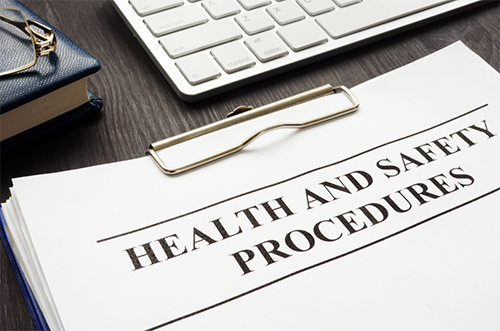Just how safe is your workplace? In order to answer this, you need to think about how you measure the safety of a workplace. You could start by asking yourself if you could bring a loved one into your facility without breaking into a panicked sweat … Or, you could take a more quantifiable approach.
Leading and lagging indicators are used to measure the quality of a Safety and Health Program and, ultimately, the overall safety of a work environment. Measured after an injury has occurred, lagging indicators are more commonly used as they require less resources. Examples of these indicators are Occupational Safety and Health Administration (OSHA) recordable illnesses and injuries, workman’s compensation claims, incident frequency and severity or days away from work.
 These measures are very useful in monitoring your Safety and Health Program performance over time; however, they are reactive measurements. Using lagging indicators alone is not an effective way to avoid injury and illness. The best way to build a strong program is to have both leading and lagging indicators used in tandem.
These measures are very useful in monitoring your Safety and Health Program performance over time; however, they are reactive measurements. Using lagging indicators alone is not an effective way to avoid injury and illness. The best way to build a strong program is to have both leading and lagging indicators used in tandem.
Leading indicators are proactive methods to reduce the uncertainty about safety in your facility. Some examples include corrective actions, safety training, employee perception surveys, preventative maintenance or safety audits.
SGIA’s annual Safety Recognition Program gives you the resources to develop and maintain your leading and lagging indicators. Participating in the program gives you access to monthly safety trainings, safety posters and a bi-monthly facility walkthrough checklist — all leading indicators. You’ll also receive timely reminders throughout the year such as OSHA Form 300A submission deadlines, when and how to participate in OSHA’s annual Safe and Sound Week, and upcoming safety webinars. And the best part is, you will be accumulating points to earn a recognition award all along the way!
The Safety Recognition Program can help save you from the extensive and long-lasting emotional, physical and financial effects of an unsafe workplace. According to OSHA, workplaces that implement a robust Safety and Health Program can reduce their injury and illness costs by 40%. A robust Safety and Health Program is built by first indicating the current state of your facility, addressing gaps and continuously improving.
Utilize the Safety Recognition Program to keep you accountable! For more information or to sign up to participate in the 2020 program, visit SGIA.org